The Office of Rail and Road (ORR) have recently issued their annual safety statistics, including accidents and safety incidents to passengers, workforce and members of the public. The safety statistic for level crossings did not show any improvement on the previous report and concerning was that there were five fatalities reported at level crossings involving members of the public in 2020-21, an increase of three compared with two in 2019-20. The number of near misses at level crossings with pedestrians also increased to 342, which is the highest since 2002-03.
Great Britain has one of the best level crossing safety records in the world and while the incidents are still low this article looks at the types of level crossings in use in Great Britain and the measures that are being taken to make them safer and all the good work involving risk management, technology and innovation, education and enforcement.
A level crossing is where a railway crosses a road, or right of way, without the use of a tunnel or bridge and includes footpaths and bridleways. The term ‘highway’ may be used, which is defined in law as any road, footpath or bridleway which the public have access to. Level crossings provide access routes across the railway for the public and private access for landowners. They range from rural footpath crossings to signalled road crossings with technology such as automatic barriers, CCTV, and obstacle detection systems.
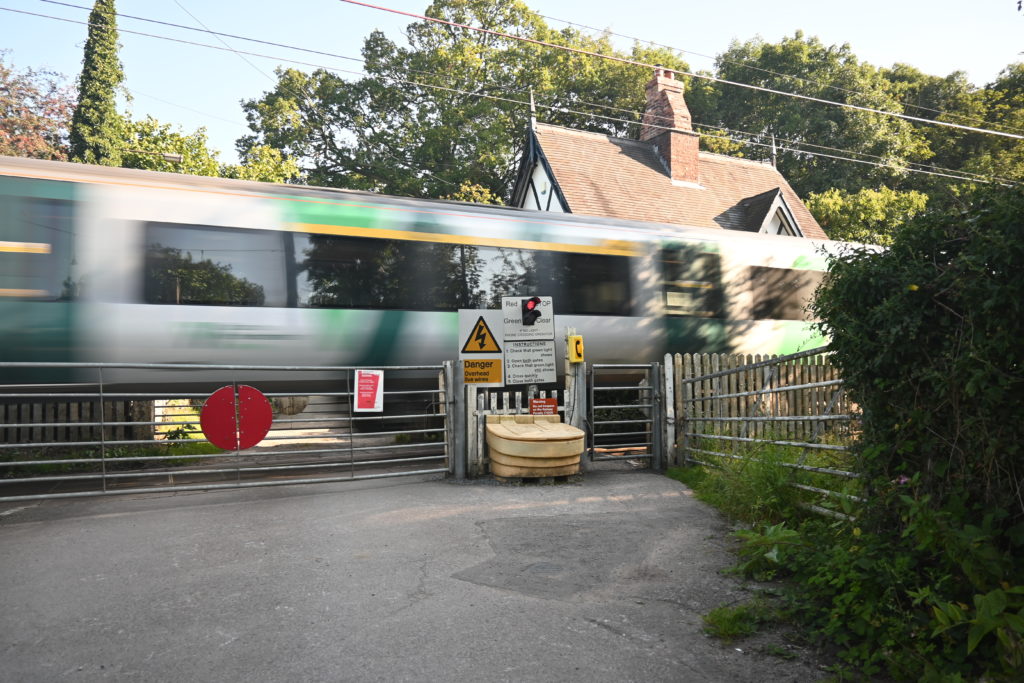
There are around 5,800 level crossings on the mainline railway and approximately 1,500 on heritage and minor lines. To a level crossing user, they may all appear to operate the same, but there are several types of level crossing.
- Gated crossings or barrier crossings operated by railway staff who check that the crossing is clear, either by direct observation or via CCTV, before closing the gate or barrier and confirming the crossing is clear to allow trains to pass over the crossing. Railway signals are interlocked with the gates or barriers, so that it is not possible to clear the signals unless the road is fully closed by the gates or barriers, nor is it possible to open the road unless the signals are at ‘Stop’ and free of ‘approach locking’. Approach locking detects when a train is approaching the crossing.
- Barrier crossings with obstacle detection. Obstacle detection crossings use radar to detect that the crossing is clear and are designed to operate fully automatically. The crossings are protected by road traffic light signals and with full lifting barriers on each side of the railway, along with an audible warning to pedestrians. Railway signals are interlocked with the lifting barriers, the same as gate or barrier crossings operated by railway staff.
- Automatic half barrier crossings (AHBC). These also operate automatically, but do not check if the crossing is clear when a train approaches. Trains should not normally arrive at the crossing in less than 27 seconds after the amber lights of the road traffic signals first show. The road layout, profile and traffic conditions must be such that road vehicles are not likely to become grounded or block back obstructing the railway. A good road profile is particularly important at this type of crossing. AHBC are now fitted with additional red warning lights for pedestrians approaching the crossing on the side of the crossing with no barrier.
- Automatic barrier crossings, locally monitored (ABCL). These appear to a user to operate the same as an AHBC, but the ‘locally monitored’ means a train driver checks the crossing is operating correctly by observing a flashing white light on the approach to the crossing. The road traffic should not exceed 56 mph and the sighting of the crossing and line speed must allow the train driver to stop if the white light is not flashing.
- Automatic open crossings, locally monitored (AOCL). These operated the same as ABCL crossings, only without a half barrier and only flashing Wig Wag lights to stop road users. The speed of the trains over the crossings will be determined by the traffic moment but should not exceed 56 mph. Most AOCL crossings have now been retrofitted with half barriers and called AOCL+B. Only about 25 AOCL crossings remain in lower risk locations such as depots. While now looking the same as a ABCL crossings, the name AOCL+B is used as the barriers have been added retrospectively, whereas ABCL crossings have been provided with barriers from new and the circuity is different.
- Open road crossings are only to be found at locations where the speed of trains over the crossing should not exceed 10 mph, there is no more than one railway line over the crossing and the daily traffic movement is low.
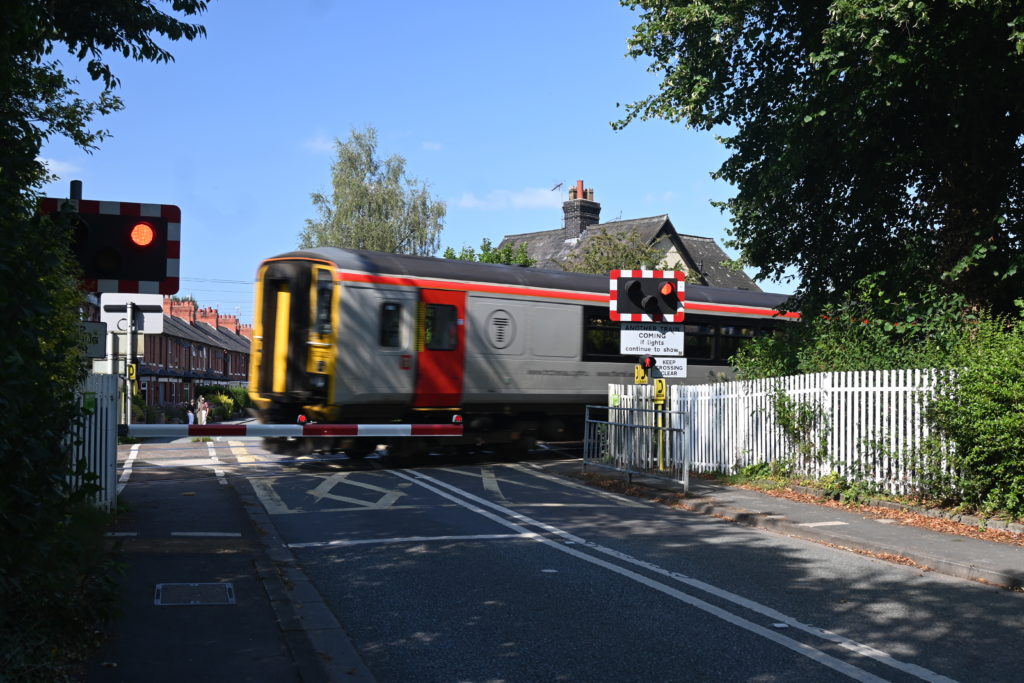
There are also approximately 2,000 User Worked Crossings (UWC) on the mainline railway. These require users to operate the crossing themselves, sometimes with the aid of a direct line telephone to the signaller, or with the aid of a Miniature Stop Light (MSL). MSL’s consist of red and green lights operated by approaching trains. An audible warning and a red light will activate when a train is approaching and users should only cross when the green light is showing and no warning is sounding. UWCs may also have gates or barriers which the user must open and close.
Level crossing telephones (UWC-T) were once considered as the ‘answer to all our problems’ with UWCs, but the method of protection by telephone is not perfect. Firstly, the user may not bother to use the telephone before using the crossing. The signaller may not have accurate information of where trains are in relation to the crossing. The signaller may tell the user not to cross, but if the train is some time away the user may get impatient and decide to cross when it is not safe. Users may not have English as their first language and signallers can become overloaded with other tasks. As signalling areas get larger the signaller workload involved with UWC-T increases along with the risk.
If there is a barrier or gate associated with UWC-T the user may not close it after using the crossing; which is an issue with all barrier / gated UWCs. The user also has to cross the level crossing a number of times to open and close the barrier / gate, which all increases risk. If the UWC is used to access a residential property the property may get deliveries from multiple delivery drivers who may not be familiar with the area. The days of such crossings being just used by the local mail person are long gone and the dramatic increase in on-line shopping has also increased level crossing risk.
On 21 January 2021, a passenger train narrowly avoided a collision with two cars at Coltishall Lane UWC-T, near Hoveton, Norfolk. The near miss occurred because the car drivers did not telephone the signaller before using the crossing. The investigation found that this may have been because the car drivers were unfamiliar with the crossing, and because the level crossing gates had already been opened.
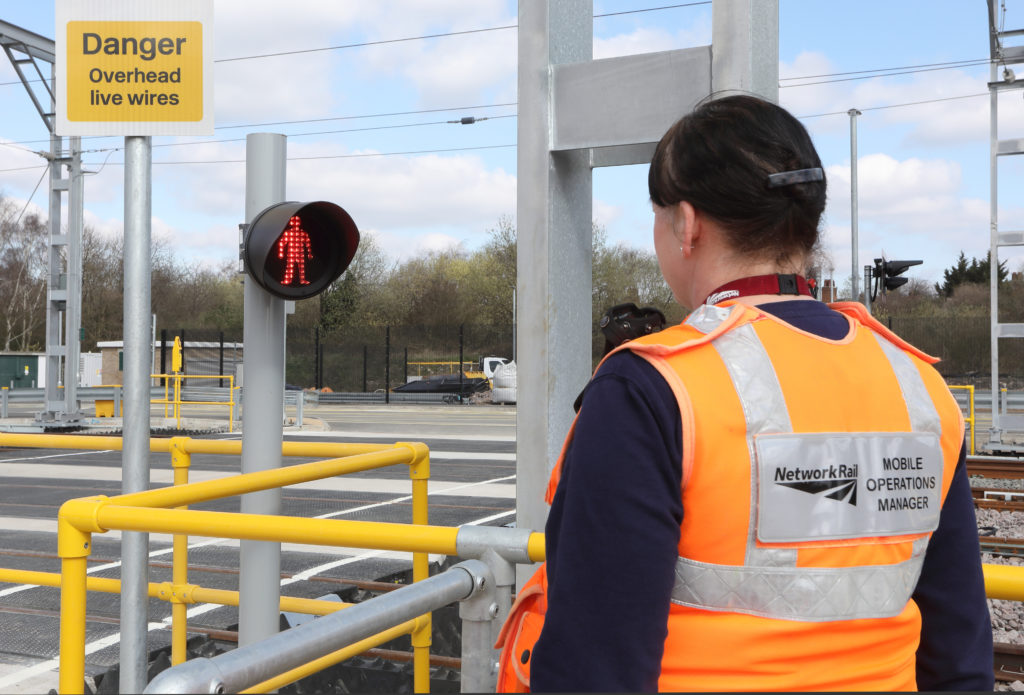
One mitigation to reduce risk at UWC is to provide a MSL and so far over a hundred have been installed. They are more expensive than a UWC-T so they can only be provided on a risk basis but hopefully costs may reduce as more are procured.
Over the last two years during the Covid-19 pandemic, the sale of road vehicle vans has increased by 7 per cent, which possibly illustrates the increase in shopping deliveries. Covid-19 also generated more people taking outdoor activity and holidays in the UK. All this has increased the risk associated with level crossings, which all must be assessed and managed.
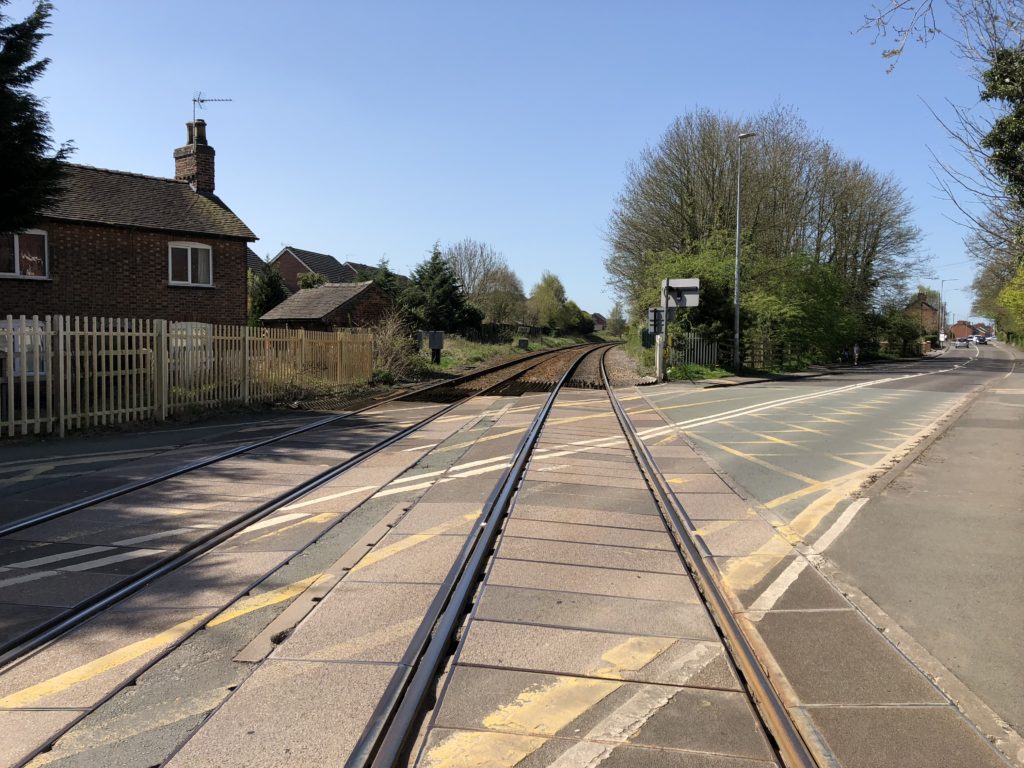
Level crossing risk assessment
Assessing change is key to level crossing management and renewals. And infrastructure managers have a legal duty to assess, manage and control the risk for all users. Level crossings can be categorised by their type as discussed earlier, but no two crossings are the same and each one is unique. Factors that must be taken into account: include frequency of trains, frequency and types of users and the environment and where the crossings are located. The frequency and types of users can quickly change. For example, a popular Sunday market may suddenly appear. Sat Nav algorithms may change and create additional road traffic. Local authorities may cancel school buses and increase the number of young crossing users and the Covid-19 lockdowns generated more people taking rural exercise.
Level crossings are normally assessed at a frequency that is based on the level of risk a crossing poses and typically ranges from 1¼ to 3¼ years. Education and level crossing safety campaigns are also a key part of improving safety and managing and mitigating the risk at crossings, and a lot of good work is done by the local level crossing safety managers in this area.
Other initiatives to reduce the risk from level crossings include:
- Eliminate risk by closing crossings where agreement can be reached. Since 2009 Network Rail has closed over 1,250 level crossings.
- Improving the sighting at level crossings where possible. Vegetation can very quickly increase risk.
- LED road traffic lights. 500 crossings have been fitted over the last ten years, significantly improving the brightness of road lights at level crossings.
- Better technology to inform users of a second train approaching crossings in quick succession after the first.
- Repositioned UWC-T. Over 250 have been moved into safer areas for users and telephone labelling has been improved at many locations.
- Roll out of automatic obstacle detection crossings with full barriers.
- Installation of barriers at 66 AOCL crossings.
- Working with British Transport Police to discourage deliberate misuse and to record offences at level crossings.
- Red light safety cameras to detect users not stopping when crossing lights operate. So far 84 have been installed across the network.
- Audible warning devices at high-risk footpath crossings.
- MSL for installation at user worked crossings. So far, a programme of 100 has been delivered.
Improved UWC signage
The Coltisal Lane incident investigation also identified that the signs at the crossing were ineffective in prompting users on how to cross safely. Rail Engineer covered the proposal to provide improved pictorial signage at UWCs in the August/September 2019 issue. It was identified that users did not always associate the existing UWC worked crossing sign with the crossing, and that the existing signage is too ‘wordy’ and does not use a pictorial representation of the crossing. The provision of the new pictorial signage has been held up due to Covid-19, the consultation process, and the legal changes required. However, the new signage has now been installed at a number of MSL crossings via site specific DoT approval and hopefully the improved signage will soon be rolled out at more UWCs.

Level crossing closures
The safest level crossing is one that has been closed. But it is not easy to close a level crossing as they connect communities and society. Closure of a level crossing may be possible and is usually the best and cheapest option to reduce safety risk where it can be done, but often it is not feasible and public level crossings in particular are near impossible to close. Private crossings are more easily closed, since normally only a limited number of people hold the crossing rights. Often there is only one rights holder, who is the owner of land that was severed when the rail line was constructed. This makes it relatively easy to negotiate with the rights holder and agree some way to eliminate the crossing. Typically, this could be a crossing connecting farm land which is no longer used.
Building a bridge in order to close a level crossing is expensive, whether it goes over or under the railway line. However, a signalled level crossing will need to be renewed several times in the life of a bridge, and a busy road and rail line with a level crossing can cause major road congestion in an area.
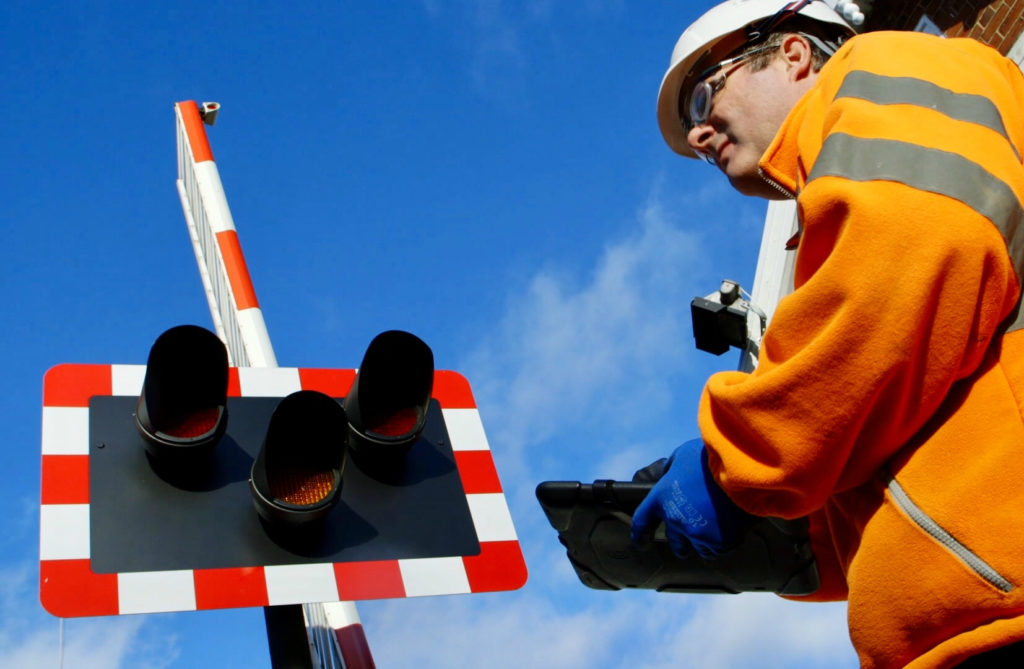
Even if a business case and funding for a bridge could be obtained, the installation of a bridge can be very disruptive for the railway, for neighbours, and for users of the right of way. Land and property may have to be acquired to allow a bridge construction, and this too may be a challenge in built up areas, as we are a crowded island. In the case of footways and bridleways the costs and disruption of a bridge to meet the needs of crossing users – who may include cyclists, horse riders, wheelchair users, mobility scooters, and parents with baby buggies, (among others), can easily be out of all proportion to the usage of the crossing.
It also needs to be empathised that all level crossings also need to be designed to accommodate cyclists, horse riders, wheelchair users, mobility scooters, and parents with baby buggies, (among others).
Risk based approach
The ORR “Principles for managing level crossing safety” were reissued June 2021. The guidance is a change from the level crossing guidance published in 2011 – “Level Crossings: Guidance for Managers, Designers and Operators”, and known as RSP7. While RSP7 did not set mandatory standards, it did describe particular layouts and methods of operation, and was perceived as setting requirements for level crossing design.
A risk-based approach is taken with the new “Principles for Managing Level Crossing Safety”, and it sets out the principles and factors which should be considered in a level crossing risk assessment. It emphasises that risk should be reduced through the design of a level crossing, or through an alternative way of crossing the railway where this is reasonably practicable, and the importance of considering how level crossings are actually used by all users. The guidance is focussed on continued improvement in level crossing risk management on a risk basis.
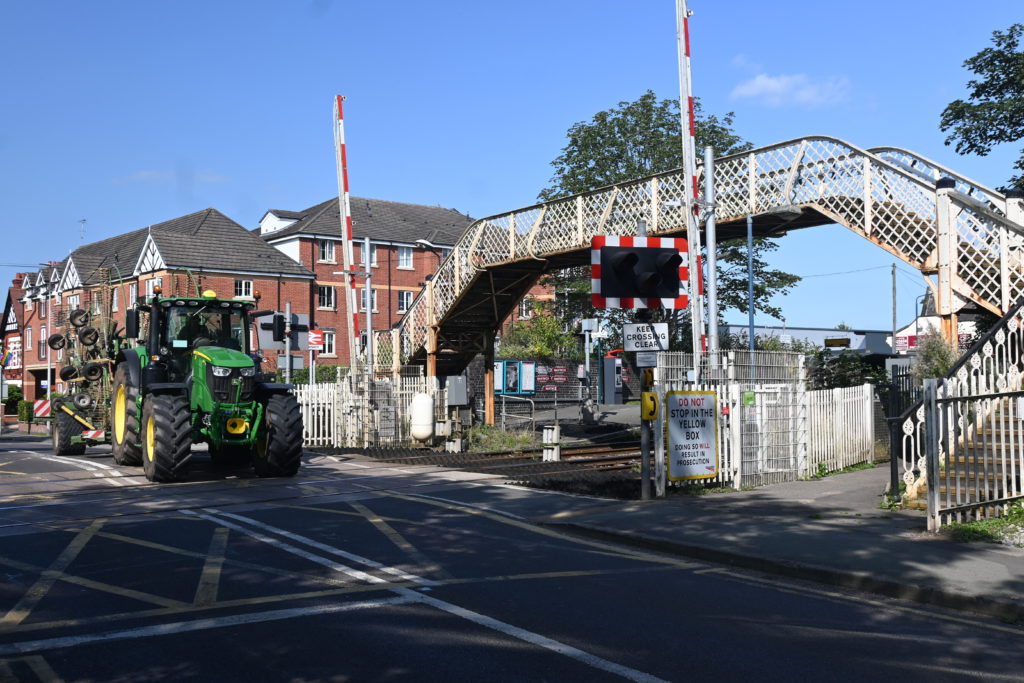
Summary
While the level crossing statistics may appear alarming, level crossing safety in Great Britain is very good – but there is always more that can be done. The road and rail networks in some parts of the country are extremely congested, which further increases the difficulty of managing level crossing safety. Level crossings represent one of the principal public safety risks on the railway and even though level crossing risk has been significantly reduced over the years, it still accounts for 6 per cent of the total railway system risk.
Closing level crossings must remain an objective, but is not easy. Further improvements, including new technology and education to manage the safety of public and passengers will always be required. The challenge will remain to make sure the continued management of level crossing risk is so that the risk is as low as reasonably practicable, while keeping communities safe and connected.



